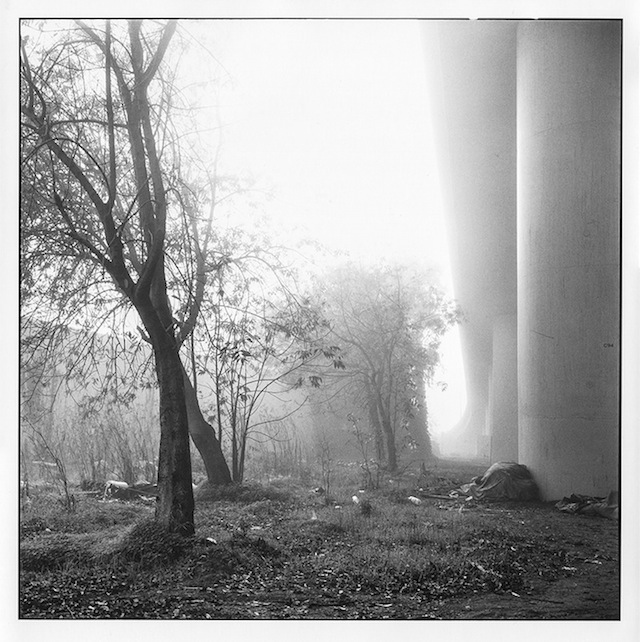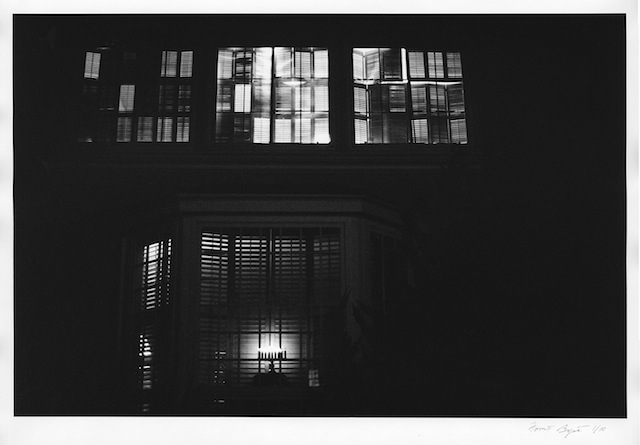Using only hand-printed black-and-white photographs, Project 24 San Francisco seeks to catch a glimpse of San Francisco’s essence without digital manipulation or interference.
The traveling exhibition, now on view at The Dryansky Gallery, employed twenty-four artists to go back to the basics and photograph San Francisco, one hour at a time, during the 2014 winter solstice. Whether analog photography is more honest or not, the participating artists create a poetic dossier of the city.
Some works channel the dreamy pictorialism of late 19th-century and early 20th-century photography. Erik Auerbach’s photograph from Potrero Hill drew me in. The misty thicket pictured is almost old world and mystical. But an enormous concrete structure, presumably a freeway at the edge of the image, disrupts this initial impression. Homeless encampments and litter emerge amongst the trees and brush upon closer inspection. The photograph oscillates between an ethereal natural setting and an urban dystopia — an apt metaphor for San Francisco.

Many artists focus on the architecture of their settings, often favoring anonymous places or neighborhood joints over iconic buildings. Forrest Dylan Bryant captures light shining through a chaotic array of window blinds in the nighttime darkness of Sea Cliff. Yelena Zhavoronkova takes an alternate view in her Lone Hill photograph, looking out a window at an old building obscured by bare wintry tree branches and reflections on the glass. Like a San Franciscan adaptation of Edward Hopper’s famous Nighthawks (1942) painting, Gabriela Hasbun documents two people sharing a late-night snack at a bubble tea shop in Little Russia as gleaming lights illuminate the deserted sidewalk.

San Francisco wouldn’t be itself without its cast of 800,000 characters, some of whom make cameos in the exhibit. Pedestrians populate Fisherman’s Wharf, and a couple cozies up in a North Beach bar. Like the unrecognizable Sea Cliff house, however, the most striking portrait is McNair Evans’ closeup of a man who does not make the photograph’s location obvious. The subject’s eyes are closed and a hand-rolled cigarette or joint is tucked snugly into his glasses. He tilts his head upwards as if he were praying, but late at night in the Mission, he is more likely sleeping on a bus or resting his eyes. The photograph intimately focuses on his nose, glasses and the light falling on his face.
Viewing Project 24 San Francisco is like taking a jaunt around the city through twenty-three sets of eyes (one of the scheduled photographers didn’t show). Some of the scenes are familiar, maybe even nostalgic, while others are unknown or unexpected. The raw quality of black-and-white film translates the artists’ experiences with a powerful lyricism that is close to, if not entirely, truthful or authentic.